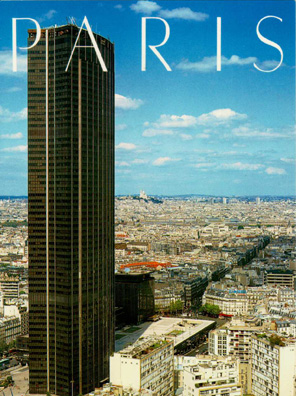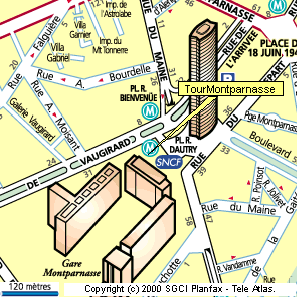| 7th International Workshop on THERMal INvestigations of ICs and Systems
|

 |


|
The restaurant is located on the 56th floor of the Montparnasse tower. From the restaurant, you may gaze Paris and its monuments, in all sorts of weather and in air-conditioned surroundings. You may also go up to the panoramic open-air terrace. Standing 209 meters above Paris, you can see up to a 40 km radius. You may even get closer to the horizon with the telescopes. |
The THERMINIC Banquet will be held at the restaurant "Le Ciel de Paris, la Tour Montparnasse" in Paris at 19.00 sharp.
Métro station:
|

|
Some history:
Three important aspects had to be taken into the MontparnasseTower design: Total height: 209m. Length: 62m. Width: 120,000 metric tons. Depth of foundations: 70m. Nbr of floors: 58, plus a terrace (59th). Passenger lifts: 25, service lifts: 2. Out of the 58 floors, 52 are occupied by offices (working population: 5000), the useful area per floor being an average of 1,700 sq. m. Two floors are open to the public, the 56th, and the terrace on the 59th; three are reserved for technical installations. The electronical power equals that of a town of 30,000 inhabitants. On the 59th floor, the highest terrace in Paris has been constructed. On a clear day, the view covers a radius of 40 kms; you can see the planes taking off from Orly Airport. Designed as a safety measure for visitors, the guard-rail can be removed in only 120 seconds to allow helicopters to land. The construction of this building, the highest in Europe, aroused much controversy. Anything that is new disturbs people, and no other structure in Paris caused more uproar than the Eiffel Tower, now the most beloved and famous landmark in the city. Towers have always been criticized and decried. However, one of man's fondest dreams, ever since the Tower of Babel, has been to reach the sky and dominate the Earth. |
Copyright © 2001 Laboratoire TIMA.
Tous droits réservés.